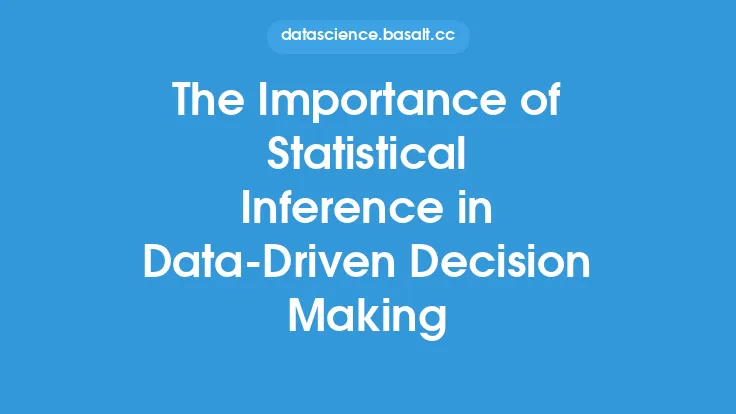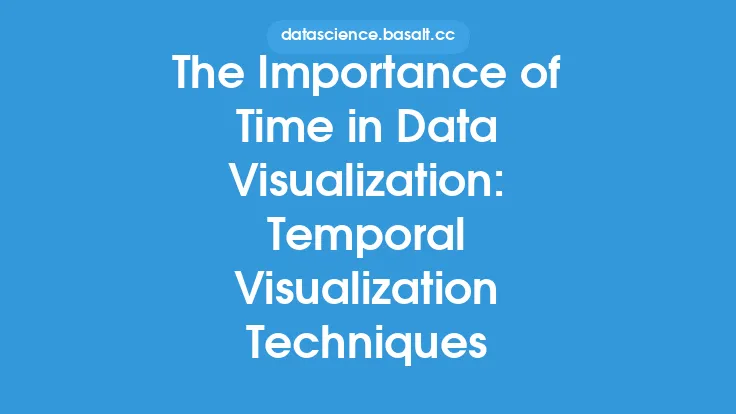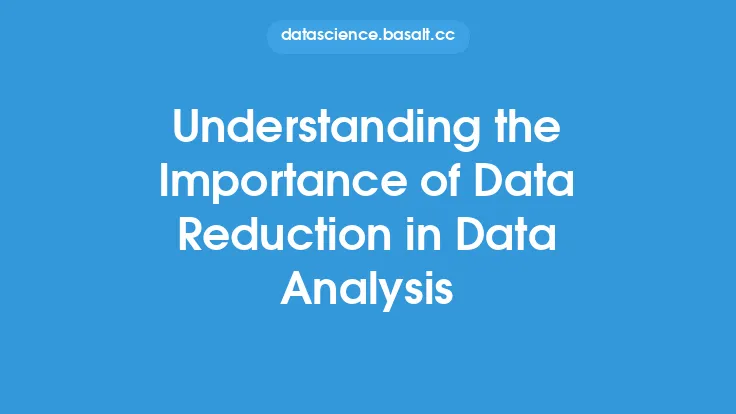In the realm of data analysis, statistical techniques play a crucial role in extracting meaningful insights from data. Among these techniques, confidence intervals stand out as a fundamental tool for quantifying uncertainty and making informed decisions. A confidence interval is a range of values within which a population parameter is likely to lie, and it provides a measure of the reliability of an estimate. The importance of confidence intervals in data analysis cannot be overstated, as they offer a way to communicate the uncertainty associated with statistical estimates and to make more accurate predictions.
Introduction to Confidence Intervals
Confidence intervals are constructed using sample data and are based on the concept of sampling distributions. The sampling distribution of a statistic is the distribution of the statistic over all possible samples of a given size. By using the sampling distribution, it is possible to calculate the probability that the true population parameter lies within a certain range. This range is the confidence interval, and the probability that the true parameter lies within it is known as the confidence level. Confidence intervals can be constructed for a variety of parameters, including means, proportions, and regression coefficients.
The Role of Confidence Intervals in Hypothesis Testing
Confidence intervals play a critical role in hypothesis testing, which is a statistical technique used to make inferences about a population parameter. Hypothesis testing involves formulating a null hypothesis and an alternative hypothesis, and then using sample data to determine whether the null hypothesis can be rejected. Confidence intervals can be used to test hypotheses by checking whether the hypothesized value of the parameter lies within the confidence interval. If it does, then the null hypothesis cannot be rejected, and if it does not, then the null hypothesis can be rejected. This approach to hypothesis testing is known as interval estimation, and it provides a more nuanced understanding of the data than traditional hypothesis testing methods.
Confidence Intervals and Margin of Error
The margin of error is a critical component of confidence intervals, as it determines the width of the interval. The margin of error is the maximum amount by which the sample estimate may differ from the true population parameter, and it is typically denoted by the symbol E. The margin of error is calculated using the standard error of the estimate, which is a measure of the variability of the sample estimate. A smaller margin of error indicates that the estimate is more precise, while a larger margin of error indicates that the estimate is less precise. Confidence intervals can be constructed with different margins of error, depending on the desired level of precision.
The Impact of Sample Size on Confidence Intervals
The sample size has a significant impact on the width of the confidence interval. As the sample size increases, the width of the confidence interval decreases, indicating that the estimate is more precise. This is because a larger sample size provides more information about the population parameter, which reduces the uncertainty associated with the estimate. Conversely, a smaller sample size results in a wider confidence interval, indicating that the estimate is less precise. Therefore, it is essential to choose a sample size that is sufficient to achieve the desired level of precision.
Confidence Intervals in Regression Analysis
Confidence intervals play a vital role in regression analysis, which is a statistical technique used to model the relationship between a dependent variable and one or more independent variables. In regression analysis, confidence intervals can be constructed for the regression coefficients, which represent the change in the dependent variable for a one-unit change in the independent variable. These confidence intervals provide a measure of the uncertainty associated with the regression coefficients and can be used to test hypotheses about the relationships between the variables.
The Importance of Confidence Intervals in Data-Driven Decision Making
Confidence intervals are essential in data-driven decision making, as they provide a way to quantify the uncertainty associated with statistical estimates. By constructing confidence intervals, decision makers can determine the range of values within which a population parameter is likely to lie, which enables them to make more informed decisions. Confidence intervals can also be used to evaluate the risk associated with different courses of action, which is critical in many fields, such as business, medicine, and public policy.
Best Practices for Constructing Confidence Intervals
To construct confidence intervals that are reliable and accurate, it is essential to follow best practices. These include using a sufficient sample size, checking for assumptions such as normality and independence, and using appropriate methods for constructing the confidence interval. Additionally, it is crucial to interpret the confidence interval correctly, taking into account the confidence level and the margin of error. By following these best practices, data analysts can construct confidence intervals that provide a accurate representation of the uncertainty associated with statistical estimates.
Common Challenges and Limitations
Despite the importance of confidence intervals, there are several challenges and limitations associated with their construction and interpretation. One of the main challenges is the choice of confidence level, which can have a significant impact on the width of the confidence interval. Additionally, confidence intervals can be sensitive to assumptions such as normality and independence, and violations of these assumptions can result in inaccurate or unreliable confidence intervals. Furthermore, confidence intervals can be difficult to interpret, especially for complex models or large datasets.
Future Directions and Emerging Trends
The field of confidence intervals is constantly evolving, with new methods and techniques being developed to address the challenges and limitations associated with traditional confidence intervals. One of the emerging trends is the use of bootstrap methods, which involve resampling the data to construct confidence intervals. Another trend is the use of Bayesian methods, which involve using prior distributions to construct confidence intervals. These emerging trends have the potential to improve the accuracy and reliability of confidence intervals, and to provide new insights into the uncertainty associated with statistical estimates.
Conclusion
In conclusion, confidence intervals are a fundamental tool in data analysis, providing a way to quantify the uncertainty associated with statistical estimates. They play a critical role in hypothesis testing, regression analysis, and data-driven decision making, and are essential for evaluating the risk associated with different courses of action. By following best practices and being aware of the challenges and limitations associated with confidence intervals, data analysts can construct reliable and accurate confidence intervals that provide a accurate representation of the uncertainty associated with statistical estimates. As the field of confidence intervals continues to evolve, new methods and techniques will emerge, providing new insights into the uncertainty associated with statistical estimates and improving the accuracy and reliability of confidence intervals.





